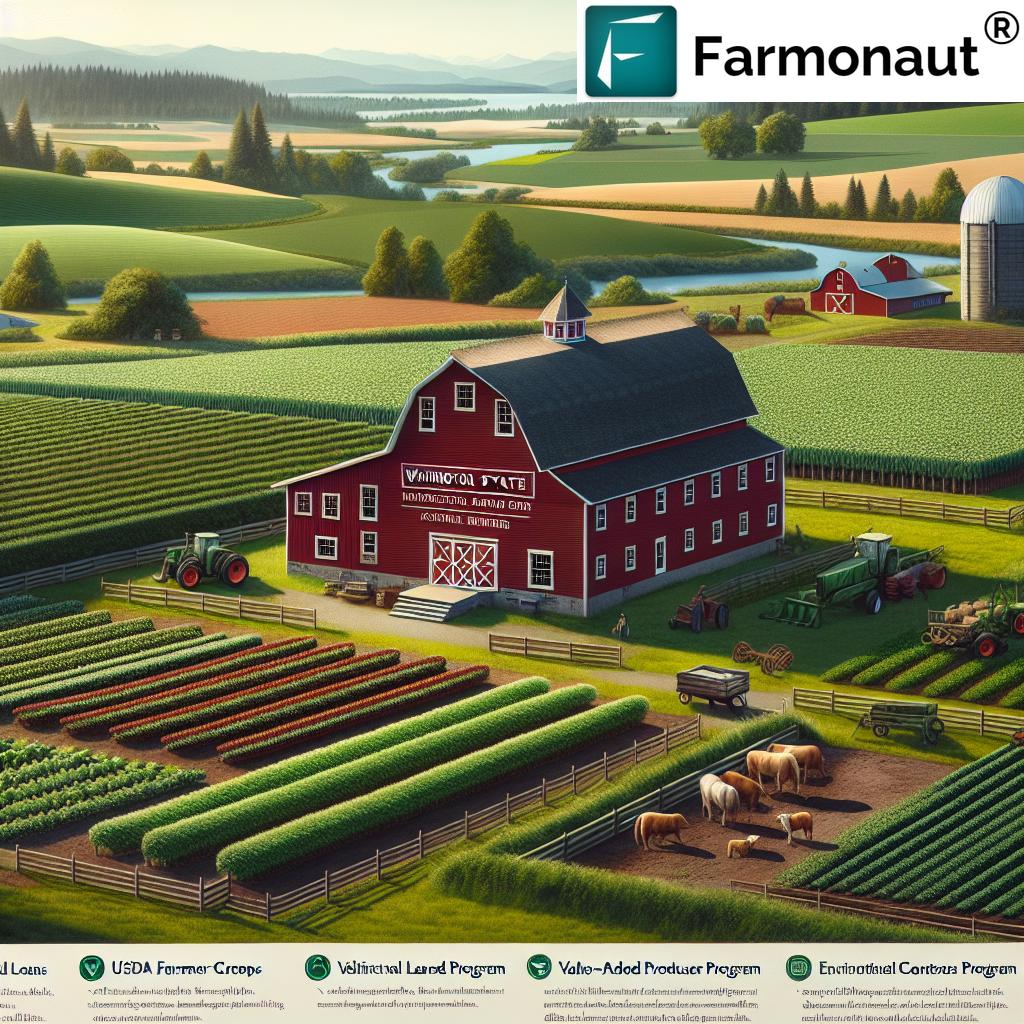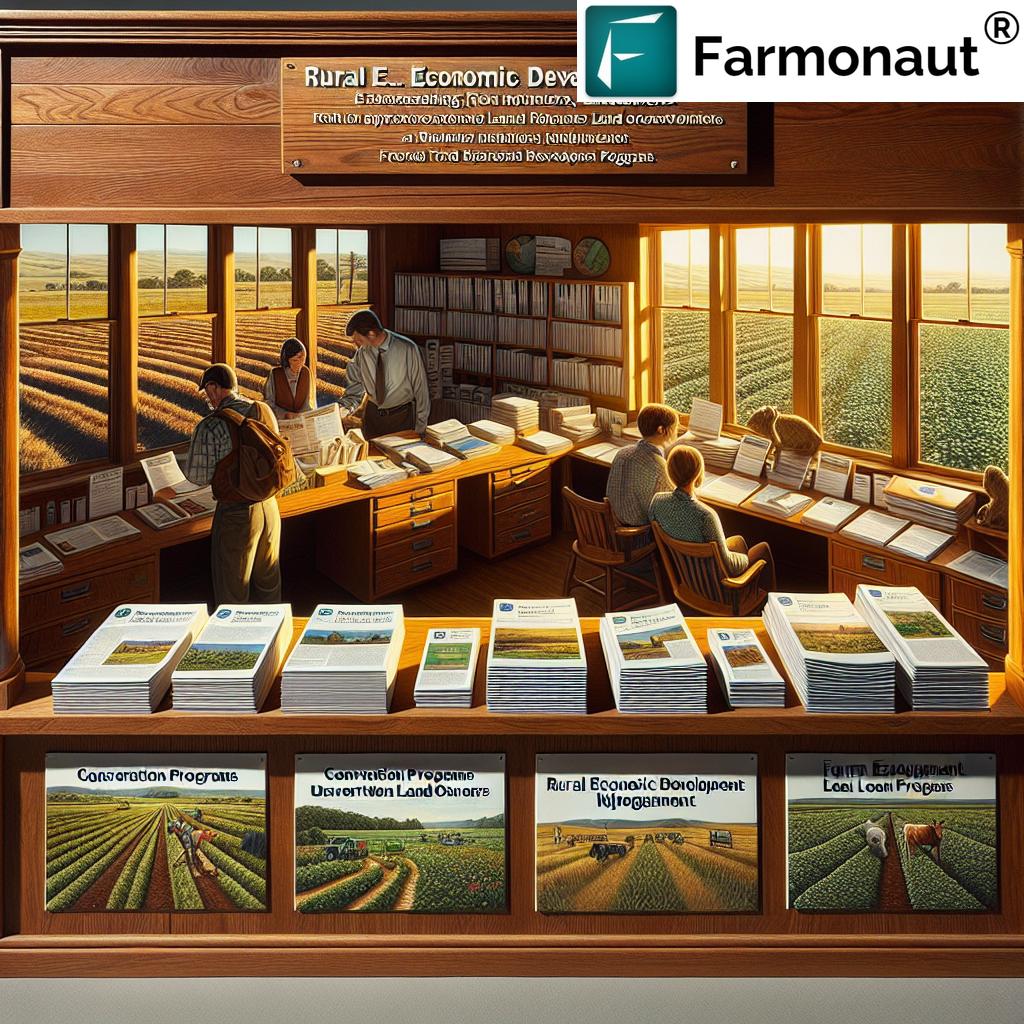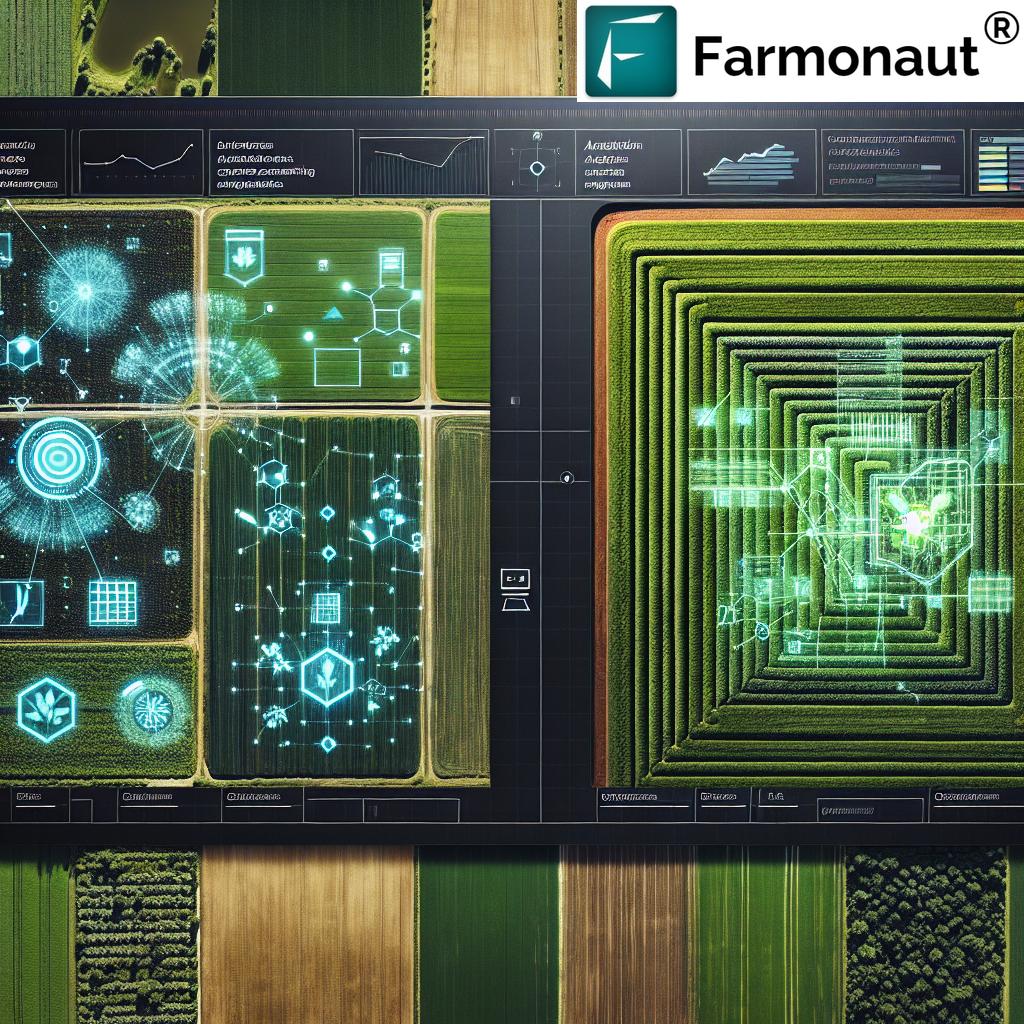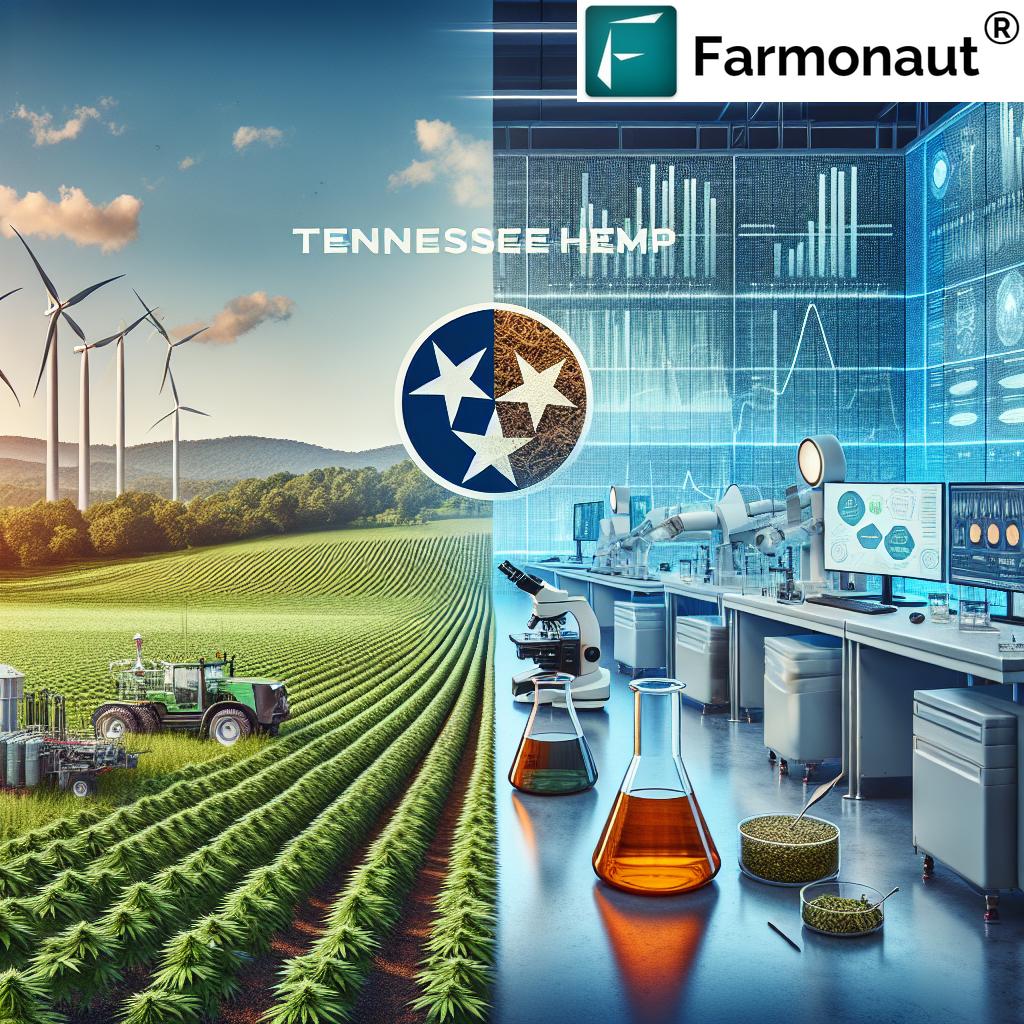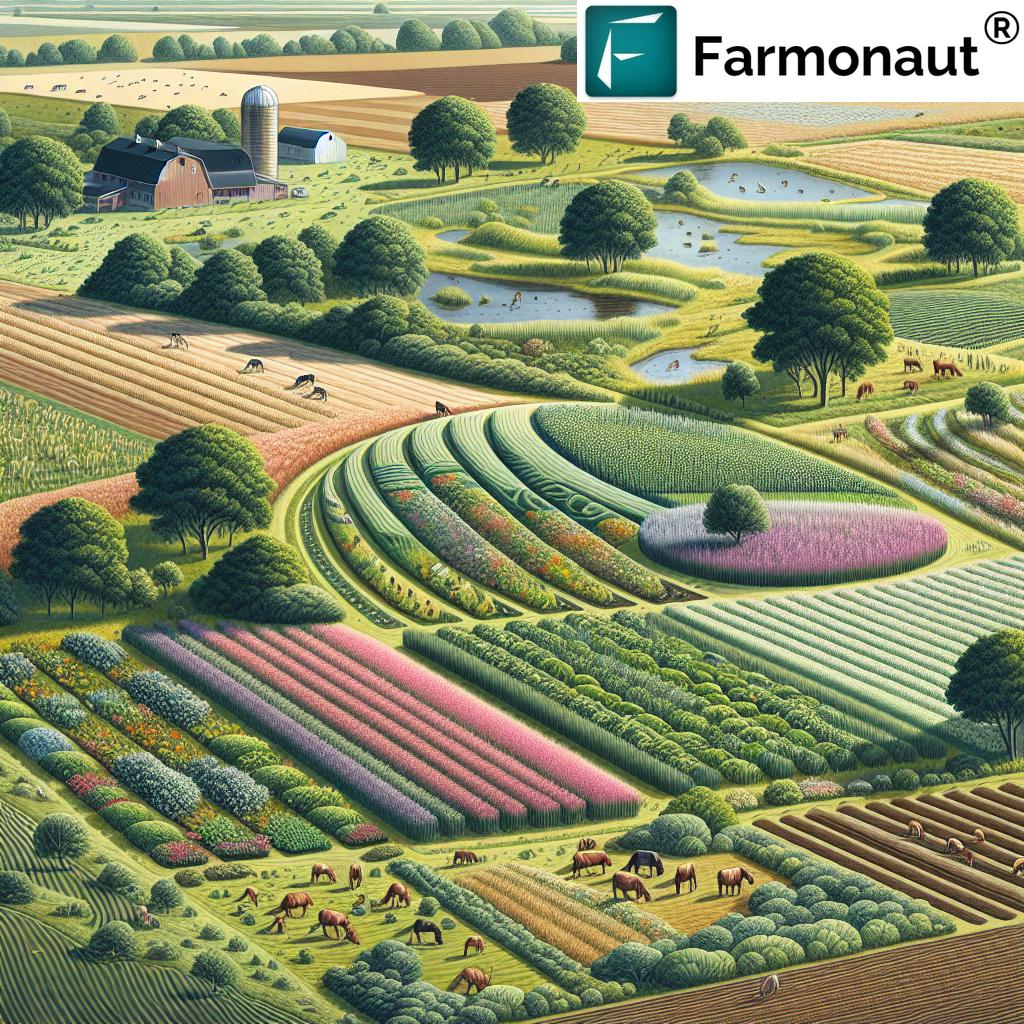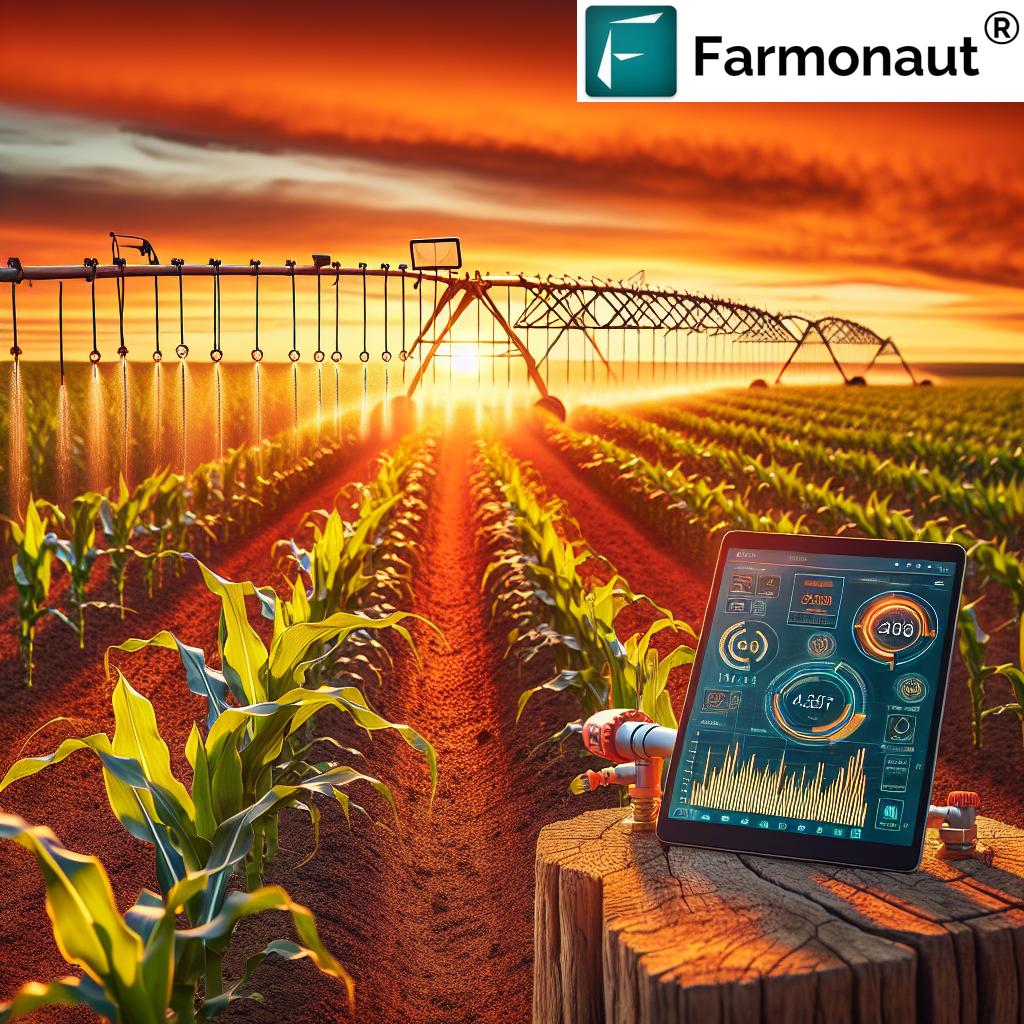USDA Loan Washington: 7 Top Programs for Farmers
Overview: USDA Loan & Grant Programs for Washington Farmers
The United States Department of Agriculture (USDA) is committed to supporting agriculture, ranching, and forestry in Washington State through a diverse set of loan, grant, and support programs. These programs are tailored to ensure that farmers, ranchers, and landowners can access the financial assistance and technical resources they need to sustain and grow their operations, implement conservation practices, and enhance both profitability and sustainability.
From farm loans in Washington State that provide working capital, to agricultural grants for farmers promoting cutting-edge research and development, to conservation programs for landowners aiming to protect natural resources, there is a wide range of initiatives available to boost the economic viability of rural communities.
In this comprehensive guide, we’ll highlight the 7 top USDA loan and grant programs that Washington farmers and ranchers should know about, covering eligibility, benefits, application processes, and key focus areas like:
- Farm Operating Loan Programs (Direct & Guaranteed)
- Farm Ownership Loans (Direct & Guaranteed)
- Emergency Loans for Natural Disasters
- Youth Agricultural Loan Programs
- Conservation Reserve and Environmental Quality Incentives Programs
- Specialty Crop Support Grants
- Value-Added Producer Grants (VAPG) & Rural Economic Development Loans
Whether you are expanding your farm, recovering from a disaster, switching to specialty crops, or seeking to adopt sustainable agricultural practices, these USDA-backed opportunities in Washington State can help power your next chapter of growth.
Comparison Table of USDA Loan & Grant Programs in Washington State
| Program Name | Purpose | Eligible Applicants | Estimated Loan/Grant Amount ($) | Interest Rate / Grant % | Application Deadline | Key Benefits |
|---|---|---|---|---|---|---|
| Farm Operating Loan (Direct) | Operating costs, equipment, supplies, livestock, minor improvements | Farmers, ranchers (including beginning and small) | Up to $300,000 (Microloan: $50,000) | Low, fixed rates | Ongoing | Flexible funding for daily farm/ranch operations |
| Farm Ownership Loan (Direct) | Purchase, expand, improve family farms, conservation | Farmers, ranchers, landowners | Up to $300,000 | Low, fixed rates | Ongoing | Supports land ownership and farm sustainability |
| Farm Operating/Ownership Loan (Guaranteed) | Farm purchase, improvements, operating needs | Farmers, ranchers unable to secure traditional loans | Varies by lender | Market, with USDA up to 95% guarantee | Ongoing | Facilitates access to credit |
| Emergency Loan | Losses due to disasters, recovery and rebuilding | Affected farmers, ranchers | Up to 100% of production/physical losses | Low, fixed | Apply within 8 months of disaster designation | Rapid recovery, restores viability |
| Youth Agricultural Loan | Educational ag projects, future ag leaders | Youth (10-20), 4-H, FFA, etc. | Up to $5,000 | Low | Ongoing | Encourages ag education & entrepreneurship |
| Conservation Programs (CRP, EQIP) | Land stewardship, resource conservation | Producers, landowners | Varies; incentives and cost-share | Up to 100% of cost-share for some practices | Varies by program | Improves sustainability and resource quality |
| Specialty Crop/Value-Added Grants, Rural Economic Loans |
Crop competitiveness, innovation, rural jobs | Farmers, processors, co-ops, local businesses | SCBG: up to $4.9M state total; VAPG: varies Rural Loans: typically $100,000+ |
Varies; grants up to 50%, loans 0% for utilities | Annual or ongoing | Supports value addition, marketing, job growth |
Farm Service Agency (FSA) Loan Programs in Washington State
The Farm Service Agency (FSA) serves as the backbone of USDA farm loan programs in Washington State, offering tailored assistance for farm operation, ownership, and disaster recovery. These programs ensure that farmers and ranchers, regardless of size or stage, have the resources and credit needed to build and sustain thriving agricultural businesses.
1. Farm Operating Loans (Direct)
- Purpose: Provides much-needed working capital for annual operating expenses: buying livestock, equipment, farm supplies, and covering utility costs.
- Key Features: Maximum loan is $300,000; microloan option ($50,000) for new and small operations.
- Eligibility: Available for both existing and beginning farmers, who may not meet traditional banking criteria. Strong focus on supporting young producers and under-resourced communities.
- How it helps: Ensures access to credit for day-to-day operation costs (fertilizer, feed, repairs, seasonal labor).
- Learn more & apply: FSA Washington Programs Overview
2. Farm Ownership Loans (Direct)
- Purpose: Designed to purchase, enlarge, or improve family farms (including soil and water conservation enhancements).
- Key Features: Up to $300,000 per loan.
- Who qualifies: Farmers, ranchers and landowners seeking to own, upgrade, or sustainably expand their operations. Priority for direct support goes to those unable to secure conventional lending.
- How it helps: Supports long-term stability and growth of family farms across Washington.
- More info: Direct Farm Ownership Details
3. Farm Operating/Ownership Loans (Guaranteed)
- Purpose: Delivered in partnership with approved lenders (banks, credit unions) but USDA guarantees up to 95% of the loan amount.
- Eligibility: For farmers who are not eligible for traditional lending; increases access to credit especially for younger and beginning producers.
- Benefit: Facilitates credit and low-interest financing for long-term investments and working capital.
- Program info: FSA Guaranteed Loan Programs
4. Emergency Loans
- Purpose: Financial assistance to cover losses from natural disasters—such as floods, wildfires, droughts—enabling rapid recovery and rebuilding.
- Key Features: Covers production and physical losses (restoring crops, buildings, equipment).
- How to access: Apply within 8 months of the USDA disaster declaration for your county. Check current eligibility at the FSA Emergency Loan Programs Page
5. Youth Agricultural Loan Programs
- Purpose: Targeted loans for youth ages 10-20 to support educational agricultural projects (often partnered with 4-H, FFA).
- Key Amounts: Up to $5,000.
- Benefit: Develops future leaders in agriculture and rural entrepreneurship.
- Further info: FSA Youth Loan Program Details
Tip: Farmonaut provides satellite-based verification for crop loans and agricultural insurance. This service enables financial institutions to assess crop health and acreage accurately, streamlining farm loan Washington State approvals and reducing fraud. Learn more about satellite crop verification.
Conservation Programs for Landowners: CRP and Environmental Quality Incentives Program (EQIP)
Conservation programs for landowners play a pivotal role in ensuring the long-term sustainability, soil health, and environmental quality of farmland throughout Washington. The USDA administers two flagship conservation initiatives:
6. Conservation Reserve Program (CRP)
- Purpose: Encourages farmers to convert environmentally sensitive agricultural land into vegetative cover, wildlife habitat, or trees.
- How It Works: In exchange, producers receive annual rental payments and cost-share funding for implementing conservation practices.
- Benefits: Dramatically reduces soil erosion, boosts water quality, supports pollinators, and increases rural land sustainability.
- Eligibility: Targeted at landowners with highly erodible soil, riparian zones, or wetland restoration areas.
- CRP Wikipedia Overview
7. Environmental Quality Incentives Program (EQIP)
- Purpose: EQIP delivers both technical and financial support to farmers and ranchers for implementing conservation practices that address priority resource concerns (like soil, air, water, and wildlife habitat).
- Incentives: Pays cost-share for projects including efficient irrigation, nutrient management, and erosion control structures.
- How to apply: Contact your local NRCS office or refer to the WSU Grant Resources for EQIP.
Fun Fact: Sustainability and carbon footprint tracking are increasingly important for agricultural producers and organizations. If you’re interested in reducing your operation’s environmental impact, Farmonaut’s carbon footprinting tools provide real-time emissions data and help with compliance and sustainability reporting.
Specialty Crop Support Grants in Washington
Washington boasts a vibrant specialty agriculture sector—think apples, berries, hops, wine grapes, and more. To enhance the competitiveness of these crops, the USDA allocates Specialty Crop Block Grant Program (SCBGP) funds to support Washington growers.
- Focus: Boosting marketing, education, and research projects for specialty crop producers.
- Funding: Over $4.9 million allocated to Washington State in recent years.
- Eligibility: Farm operators, non-profits, local and tribal governments, and universities can apply for project funding.
- Details on WA specialty crop support grants
Value-Added Producer Grants (VAPG): Get More Out of Your Crops
The VAPG program is designed to support agricultural producers in processing and marketing value-added agricultural products—such as cheese from milk, jam from fruit, or locally branded grain. This is ideal for farmers seeking to diversify operations and boost income.
- Who Should Apply: Farmers and ranchers, cooperatives, and agricultural associations. Priority is given to veterans, beginning, and socially-disadvantaged producers.
- Funding: USDA awards cover up to 50% of total project costs (planning and working capital) for value addition.
- Veteran-focused value added producer grants
Pro tip for business growth: Adding value to farm products is not only lucrative, but increases market competitiveness and stability—critical in today’s economic climate.
Enhance your value-added business with food safety and supply chain transparency. Farmonaut’s blockchain-based traceability lets processors, retailers, and consumers track a product’s journey from farm to table. This builds trust, meets regulatory requirements, and can give your premium farm products an edge in marketing.
Rural Economic Development Loans and Grants
To tackle the need for business growth and job creation in rural communities, the Rural Economic Development Loan and Grant (REDLG) Program provides:
- Zero-interest loans and grants to local utility organizations (such as rural electric cooperatives)
- These rural providers pass funding to rural businesses (including farm-based businesses) for projects that create/retain jobs, build infrastructure, or support local processing.
- Eligibility: Towns with populations less than 50,000 are considered rural.
- Full details on the REDLG program in Washington
Key Impact: This rural development support stimulates economic growth and strengthens the foundation for local agricultural entrepreneurs seeking to expand or diversify their businesses.
For agribusinesses aiming to cut costs and streamline distribution:
Farmonaut’s fleet management solutions help you optimize agricultural machinery and logistics, ensuring your rural business runs efficiently across geographically dispersed operations.
Additional Support for Veterans & Young Producers in Washington Agriculture
The USDA and Washington State Department of Agriculture have created a suite of agricultural grants, financing, and mentorship programs specifically for veterans, young, and beginning farmers.
- Farmer Veteran Fellowship Fund: Provides up to $5,000 in grants for tools, equipment, or livestock.
- AgVision Program: From Northwest Farm Credit, offers financing and business resources for young and small producers.
- Explore agricultural financial support for veterans
Why it matters: Ensures generational continuity in Washington’s agricultural sector and nurtures the development of future leaders through direct financial support, guidance, and partnership opportunities.
Application Process and Resources for Farm Loans, Grants, and Conservation Support
Applying for USDA loans, agricultural grants for farmers, and conservation programs for landowners in Washington requires careful preparation. Here are the key steps:
- Identify the Best Program(s): Review the table above and match your needs (operating, ownership, recovery, conservation, value addition, etc.) with the right loan or grant program.
- Contact Your Local USDA/FSA or NRCS Office: Your local office can provide application forms, answer eligibility questions, and offer guidance.
- Gather Documentation: Prepare a business plan, financial statements, and personal/operation history. Conservation applicants may need maps and land use data.
- Complete the Application: Follow instructions carefully, submit all required documents, and keep copies for your records.
- Consult Extension and Resource Centers: Washington State University Extension and regional Small Farm programs offer advice and technical resources.
- Stay Engaged: Monitor your application status and follow up with agency staff as needed.
Quick links:
– FSA Washington
– USDA Rural Development WA
Tip: Using digital tools such as Farmonaut’s real-time crop health monitoring can provide credible, up-to-date data for your loan or grant applications, improving your chances of success.
Digital Farm Management Solutions with Farmonaut
Farmonaut is revolutionizing agriculture not by lending, but by providing cutting-edge digital management services for farmers, agribusinesses, and government users in Washington and worldwide.
-
Satellite-Based Crop Health Monitoring: Farmonaut uses satellite imagery to help monitor NDVI, soil moisture, irrigation, and crop stress. This supports optimal intervention and reduces resource wastage. Try this via our
Large-scale farm management/web app for streamlined operation. - AI-Driven Advisory: Instant, actionable, and personalized advisory via Jeevn AI based on real-time data, ensuring farmers make informed decisions for improved productivity.
- Blockchain-Based Product Traceability: Enhance marketability and build trust with transparent documentation of your value-added or specialty crops. Learn about blockchain traceability here.
- Fleet and Resource Management: For agri-enterprises operating at scale, our fleet management solution helps optimize vehicles, improve logistics, and cut operational costs.
- API & Integration: Developers and agri-tech companies can incorporate advanced weather, satellite, and resource data directly into existing systems via our public satellite data API or developer documentation.
Our value: By providing cost-effective, data-driven farm management, Farmonaut empowers farmers and agri-business owners to boost productivity, improve sustainability, and access financial support with greater confidence.
Monthly & annual subscriptions available—explore pricing below:
Frequently Asked Questions (FAQ): Farm Loans Washington State
What is the maximum amount I can get from a USDA direct farm operating loan in Washington?
The maximum is $300,000 for standard direct operating loans. Microloans—ideal for beginning farmers or small operations—are capped at $50,000.
How can I apply for farm loans or agricultural grants in Washington?
Start by contacting your local USDA office (FSA for loans, NRCS for conservation programs). Review eligibility requirements, gather supporting documents, and complete application forms. Utilize WSU Extension grant resources for further assistance.
Do USDA disaster/emergency loans cover all types of losses?
Emergency loans cover both production losses (crops, livestock) and physical losses (equipment, buildings) caused by eligible natural disasters.
Who qualifies for USDA conservation programs like CRP and EQIP?
Landowners, agricultural producers, and tribal entities managing agricultural or environmentally sensitive land in Washington may be eligible. Each program has its own specific criteria and enrollment periods.
Are there special programs or financial assistance for veterans or young farmers in Washington?
Yes! Veterans and young/beginning farmers receive priority status for many USDA loans and grants, as well as access to dedicated funds (e.g., Farmer Veteran Fellowship Fund, AgVision).
How does Farmonaut help with loan or grant applications?
Farmonaut provides real-time crop health, soil, and resource data, enabling you to add scientific evidence to your applications. Lenders and grant reviewers value this data-driven approach.
What is the benefit of value-added producer grants (VAPG) in Washington?
VAPG grants support marketing, planning, and developing value-added ag products such as packaged foods, cheeses, beverages, and processed grains. These increase profit margins and rural market resilience.
Can Farmonaut’s API integrate with existing on-farm software?
Yes! Our public API and developer docs enable seamless data flow into most modern software platforms, supporting tailored farm analytics, compliance, and reporting.
Conclusion: Secure Your Farm’s Future with USDA Programs and Agricultural Technology
Washington State farmers, ranchers, and landowners are at the heart of building a sustainable, vibrant rural economy. From farm loans designed specifically for young or beginning operators, to agricultural grants for farmers fueling innovation, to conservation programs for landowners enhancing our landscape’s resilience, there are ample opportunities for those committed to stewardship and growth.
By leveraging both USDA’s diverse financial assistance programs and modern digital tools like Farmonaut, agricultural producers across Washington can maximize productivity, sustainability, and market competitiveness—today and into the future.


